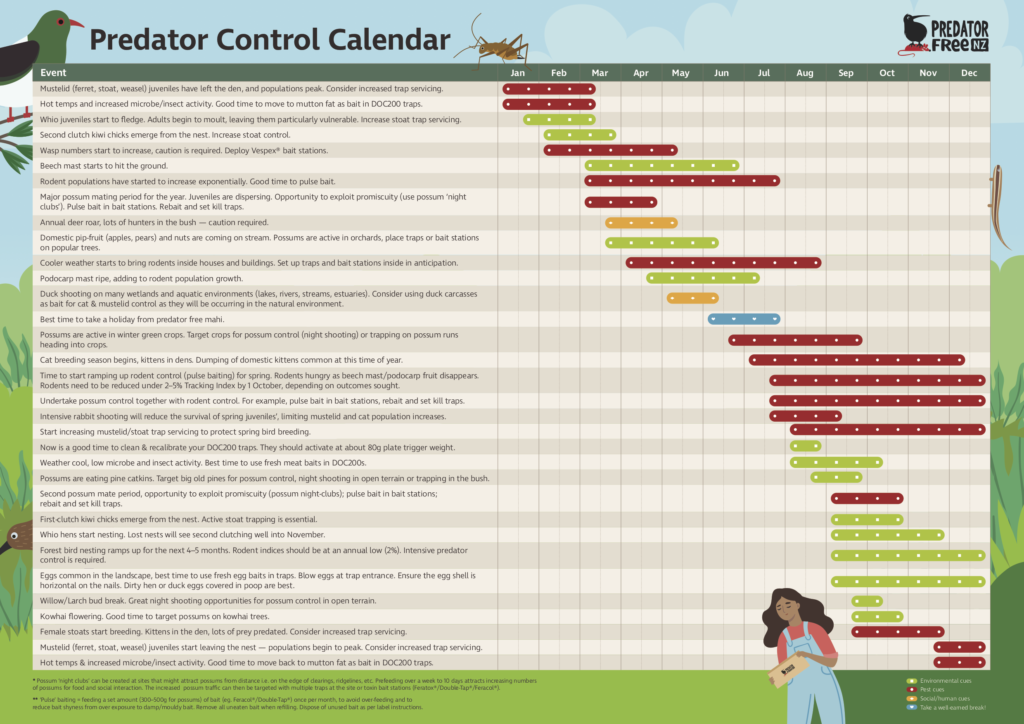This annual wall planner is full of useful information to help you tailor your predator control to seasonal changes in the environment and maximise your effectiveness. Information includes what predators might be up to in your landscape at different times of the year including what trees are attractive to possums, when birds are breeding and much more.

Nowadays our calendars are jam-packed: pet birthdays, obscure holidays, and first-date anniversaries. So it’s hard to imagine what we might be missing, but as it turns out, introduced predators have schedules too.
Did you ever wonder when peak stoat mating season was or perhaps when you should use certain baits in your traps? Well, now you can find all this information and more with our new predator control planning calendar.
Many of New Zealand’s introduced predators thrive at times when our endemic wildlife is at its most vulnerable. So to get the most out of our predator control efforts it is important that we look at various environmental cues, predator behaviour and times when our native species are most susceptible to predation.
For example, in years when the beech masts, seed starts to hit the ground in early March, which can lead to an increase in rodent populations; this is a perfect time to pulse your bait. Or did you know that when kōwhai start flowering in September, it is the ideal time to target possums near kōwhai trees.
This calendar was developed as an annual snapshot of the different strategies you can employ to maximise your predator control. But don’t forget to take a break too. We have identified June as the perfect time to take a well-deserved holiday from your incredible predator free mahi.
For more information on what you can do to take your trapping to the next level, you can download a Predator Control Annual Calendar (PDF, 102KB) or buy a pair of A2 prints from our shop.

